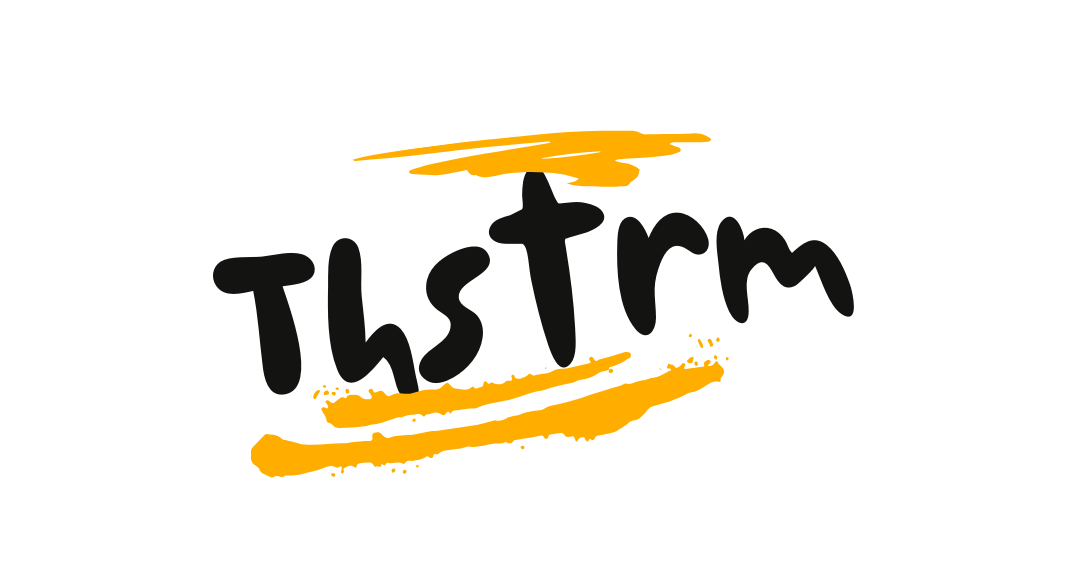Understanding Intersectionality And Its Influence On Sexuality And Gender Identity
May 16, 2025
Understanding Intersectionality
Intersectionality recognizes that individuals hold multiple, overlapping identities that intersect and shape their experiences. When applied to sexuality and gender identity, this framework highlights how factors like race, class, ability, and religion, in addition to sexual orientation and gender expression, contribute to diverse lived realities within the LGBTQ+ community.
Definition of Intersectionality
Intersectionality recognizes that individuals hold multiple, overlapping identities that intersect and shape their experiences. When applied to sexuality and gender identity, this framework highlights how factors like race, class, ability, and religion, in addition to sexual orientation and gender expression, contribute to diverse lived realities within the LGBTQ+ community.
For example, a Black lesbian woman might face unique challenges and experiences compared to a white lesbian woman, due to the intersection of her race and sexuality. Similarly, a transgender man with a disability may navigate different societal barriers than a cisgender transgender man.
Understanding intersectionality is crucial for creating inclusive and equitable spaces that acknowledge the complexities of individuals’ identities and experiences.
Historical Context
Intersectionality is a framework that recognizes how various aspects of a person’s identity intersect to create unique experiences. This concept originated in legal scholarship by Kimberlé Crenshaw in the 1980s to highlight how race and gender intersect to create unique challenges for Black women.
When applied to sexuality and gender identity, intersectionality emphasizes that LGBTQ+ individuals’ experiences are not monolithic. Factors like race, class, religion, ability, and other social categories interact with sexual orientation and gender expression to shape individual realities.
For example, a transgender person of color may face different forms of discrimination compared to a white transgender person. Similarly, a queer person living in poverty might experience unique challenges related to both their identity and economic circumstances.
Acknowledging intersectionality is vital for creating truly inclusive environments within the LGBTQ+ community and beyond. It allows for a deeper understanding of the diverse lived experiences of individuals and helps dismantle systems of oppression that target marginalized groups.
Key Concepts in Intersectionality
Intersectionality recognizes that individuals hold multiple, overlapping identities that intersect and shape their experiences. When applied to sexuality and gender identity, this framework highlights how factors like race, class, ability, and religion, in addition to sexual orientation and gender expression, contribute to diverse lived realities within the LGBTQ+ community.
For example, a Black lesbian woman might face unique challenges and experiences compared to a white lesbian woman, due to the intersection of her race and sexuality. Similarly, a transgender man with a disability may navigate different societal barriers than a cisgender transgender man.
Understanding intersectionality is crucial for creating inclusive and equitable spaces that acknowledge the complexities of individuals’ identities and experiences.
Intersectionality is a framework that recognizes how various aspects of a person’s identity intersect to create unique experiences. This concept originated in legal scholarship by Kimberlé Crenshaw in the 1980s to highlight how race and gender intersect to create unique challenges for Black women.
When applied to sexuality and gender identity, intersectionality emphasizes that LGBTQ+ individuals’ experiences are not monolithic. Factors like race, class, religion, ability, and other social categories interact with sexual orientation and gender expression to shape individual realities.
For example, a transgender person of color may face different forms of discrimination compared to a white transgender person. Similarly, a queer person living in poverty might experience unique challenges related to both their identity and economic circumstances.
Acknowledging intersectionality is vital for creating truly inclusive environments within the LGBTQ+ community and beyond. It allows for a deeper understanding of the diverse lived experiences of individuals and helps dismantle systems of oppression that target marginalized groups.
Intersectionality and Sexuality
Intersectionality recognizes that individuals hold multiple, overlapping identities that intersect and shape their experiences. When applied to sexuality and gender identity, this framework highlights how factors like race, class, ability, and religion, in addition to sexual orientation and gender expression, contribute to diverse lived realities within the LGBTQ+ community.
For example, a Black lesbian woman might face unique challenges and experiences compared to a white lesbian woman, due to the intersection of her race and sexuality. Similarly, a transgender man with a disability may navigate different societal barriers than a cisgender transgender man.
Understanding intersectionality is crucial for creating inclusive and equitable spaces that acknowledge the complexities of individuals’ identities and experiences.
Impact on Sexual Orientation
Intersectionality recognizes that individuals hold multiple, overlapping identities that intersect and shape their experiences. When applied to sexuality and gender identity, this framework highlights how factors like race, class, ability, and religion, in addition to sexual orientation and gender expression, contribute to diverse lived realities within the LGBTQ+ community.
For example, a Black lesbian woman might face unique challenges and experiences compared to a white lesbian woman, due to the intersection of her race and sexuality. Similarly, a transgender man with a disability may navigate different societal barriers than a cisgender transgender man.
Understanding intersectionality is crucial for creating inclusive and equitable spaces that acknowledge the complexities of individuals’ identities and experiences.
Experiences of LGBTQ+ Individuals from Marginalized Groups
Intersectionality recognizes that individuals hold multiple, overlapping identities that intersect and shape their experiences. When applied to sexuality and gender identity, this framework highlights how factors like race, class, ability, and religion, in addition to sexual orientation and gender expression, contribute to diverse lived realities within the LGBTQ+ community.
- For example, a Black lesbian woman might face unique challenges and experiences compared to a white lesbian woman, due to the intersection of her race and sexuality.
- Similarly, a transgender man with a disability may navigate different societal barriers than a cisgender transgender man.
Understanding intersectionality is crucial for creating inclusive and equitable spaces that acknowledge the complexities of individuals’ identities and experiences.
Visibility and Representation
Intersectionality recognizes that individuals hold multiple, overlapping identities that intersect and shape their experiences. When applied to sexuality and gender identity, this framework highlights how factors like race, class, ability, and religion, in addition to sexual orientation and gender expression, contribute to diverse lived realities within the LGBTQ+ community.
For example, a Black lesbian woman might face unique challenges and experiences compared to a white lesbian woman, due to the intersection of her race and sexuality. Similarly, a transgender man with a disability may navigate different societal barriers than a cisgender transgender man.
Understanding intersectionality is crucial for creating inclusive and equitable spaces that acknowledge the complexities of individuals’ identities and experiences.
Intersectionality and Gender Identity
Intersectionality recognizes that individuals hold multiple, overlapping identities that intersect and shape their experiences. When applied to sexuality and gender identity, this framework highlights how factors like race, class, ability, and religion, in addition to sexual orientation and gender expression, contribute to diverse lived realities within the LGBTQ+ community.
For example, a Black lesbian woman might face unique challenges and experiences compared to a white lesbian woman, due to the intersection of her race and sexuality. Similarly, a transgender man with a disability may navigate different societal barriers than a cisgender transgender man.
Understanding intersectionality is crucial for creating inclusive and equitable spaces that acknowledge the complexities of individuals’ identities and experiences.
Influence on Gender Expression
Intersectionality recognizes that individuals hold multiple, overlapping identities that intersect and shape their experiences. When applied to sexuality and gender identity, this framework highlights how factors like race, class, ability, and religion, in addition to sexual orientation and gender expression, contribute to diverse lived realities within the LGBTQ+ community.
For example, a Black lesbian woman might face unique challenges and experiences compared to a white lesbian woman, due to the intersection of her race and sexuality. Similarly, a transgender man with a disability may navigate different societal barriers than a cisgender transgender man.
Understanding intersectionality is crucial for creating inclusive and equitable spaces that acknowledge the complexities of individuals’ identities and experiences.
Transgender Experiences
Intersectionality recognizes that individuals hold multiple, overlapping identities that intersect and shape their experiences. When applied to sexuality and gender identity, this framework highlights how factors like race, class, ability, and religion, in addition to sexual orientation and gender expression, contribute to diverse lived realities within the LGBTQ+ community.
For example, a Black lesbian woman might face unique challenges and experiences compared to a white lesbian woman, due to the intersection of her race and sexuality. Similarly, a transgender man with a disability may navigate different societal barriers than a cisgender transgender man.
Understanding intersectionality is crucial for creating inclusive and equitable spaces that acknowledge the complexities of individuals’ identities and experiences.
Gender Non-Conforming Identities

Intersectionality recognizes that individuals hold multiple, overlapping identities that intersect and shape their experiences. When applied to sexuality and gender identity, this framework highlights how factors like race, class, ability, and religion, in addition to sexual orientation and gender expression, contribute to diverse lived realities within the LGBTQ+ community.
For example, a Black lesbian woman might face unique challenges and experiences compared to a white lesbian woman, due to the intersection of her race and sexuality. Similarly, a transgender man with a disability may navigate different societal barriers than a cisgender transgender man.
Understanding intersectionality is crucial for creating inclusive and equitable spaces that acknowledge the complexities of individuals’ identities and experiences.
- Intersectionality recognizes that individuals hold multiple, overlapping identities that intersect and shape their experiences.
- When applied to sexuality and gender identity, this framework highlights how factors like race, class, ability, and religion, in addition to sexual orientation and gender expression, contribute to diverse lived realities within the LGBTQ+ community.
- For example, a Black lesbian woman might face unique challenges and experiences compared to a white lesbian woman, due to the intersection of her race and sexuality.
- Similarly, a transgender man with a disability may navigate different societal barriers than a cisgender transgender man.
- Understanding intersectionality is crucial for creating inclusive and equitable spaces that acknowledge the complexities of individuals’ identities and experiences.
Challenges and Implications
Understanding intersectionality is paramount when exploring sexuality and gender identity. This framework acknowledges that individuals hold multiple, intersecting identities—race, class, ability, religion, sexual orientation, and gender expression—which collectively shape their lived experiences within the LGBTQ+ community.
Discrimination and Prejudice
Intersectionality recognizes that individuals hold multiple, overlapping identities that intersect and shape their experiences. When applied to sexuality and gender identity, this framework highlights how factors like race, class, ability, and religion, in addition to sexual orientation and gender expression, contribute to diverse lived realities within the LGBTQ+ community.
- Challenges and Implications: Individuals from marginalized groups within the LGBTQ+ community may face compounded discrimination and prejudice based on the intersection of their identities. For example, a Black transgender woman might experience unique challenges related to both her race and gender identity.
- Discrimination and Prejudice: Intersectionality reveals that discrimination is not uniform. LGBTQ+ individuals from minority backgrounds often encounter prejudice rooted in societal biases against multiple categories simultaneously. This can manifest in disparities in access to healthcare, housing, employment, and other essential services.
Understanding intersectionality is crucial for creating inclusive and equitable spaces that acknowledge the complexities of individuals’ identities and experiences. By recognizing and addressing the unique challenges faced by individuals at the intersections of their identities, we can work towards dismantling systems of oppression and fostering a more just and equitable society.

Access to Resources and Support
Intersectionality recognizes that individuals hold multiple, overlapping identities that intersect and shape their experiences. When applied to sexuality and gender identity, this framework highlights how factors like race, class, ability, and religion, in addition to sexual orientation and gender expression, contribute to diverse lived realities within the LGBTQ+ community.
For example, a Black lesbian woman might face unique challenges and experiences compared to a white lesbian woman, due to the intersection of her race and sexuality. Similarly, a transgender man with a disability may navigate different societal barriers than a cisgender transgender man.

Understanding intersectionality is crucial for creating inclusive and equitable spaces that acknowledge the complexities of individuals’ identities and experiences.
Intersectionality recognizes that individuals hold multiple, overlapping identities that intersect and shape their experiences. When applied to sexuality and gender identity, this framework highlights how factors like race, class, ability, and religion, in addition to sexual orientation and gender expression, contribute to diverse lived realities within the LGBTQ+ community.
- Challenges and Implications
- Access to Resources and Support
Advocacy and Activism
Intersectionality recognizes that individuals hold multiple, overlapping identities that intersect and shape their experiences. When applied to sexuality and gender identity, this framework highlights how factors like race, class, ability, and religion, in addition to sexual orientation and gender expression, contribute to diverse lived realities within the LGBTQ+ community.
For example, a Black lesbian woman might face unique challenges and experiences compared to a white lesbian woman, due to the intersection of her race and sexuality. Similarly, a transgender man with a disability may navigate different societal barriers than a cisgender transgender man.
Understanding intersectionality is crucial for creating inclusive and equitable spaces that acknowledge the complexities of individuals’ identities and experiences.
## Advocacy and Activism
Advocacy and activism grounded in intersectionality are essential for advancing LGBTQ+ rights and creating meaningful social change. By centering the experiences and needs of marginalized groups within the community, these efforts work to dismantle systems of oppression and promote equality for all.
Here are some key aspects:
* **Amplifying Marginalized Voices:** Intersectionality emphasizes giving voice to those whose experiences are often overlooked or silenced. This involves creating platforms for individuals from diverse backgrounds to share their stories, concerns, and aspirations.
* **Tailored Strategies:** Activist strategies should be tailored to address the specific challenges faced by different intersectional groups within the LGBTQ+ community.
* **Building Coalitions:** Intersectionality encourages collaboration and solidarity among various social justice movements. By working together, advocates can amplify their impact and create broader systemic change.
* **Challenging Assumptions:** Activism rooted in intersectionality challenges heteronormative and cisnormative assumptions that often underlie policy and societal structures.
pleasure dom
Fringe Beverly Hills
Bristol Summer Series
- Skin Treatment & Skincare Consultations Near Cranleigh, Surrey - December 5, 2025
- Skin Pen Microneedling Near Pirbright, Surrey - December 3, 2025
- Skin Pen Microneedling Near Chessington, Surrey - December 1, 2025
